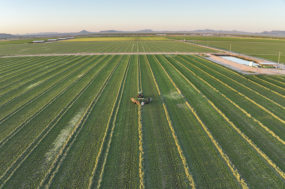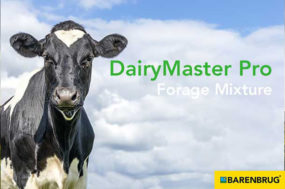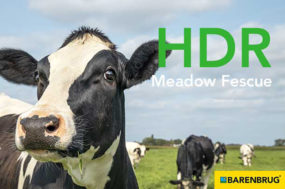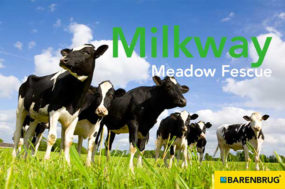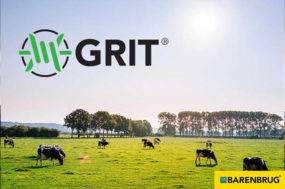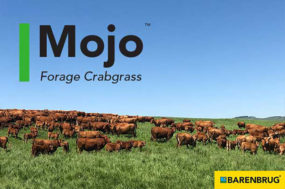Grasses also have significant nutrient management benefits, particularly regarding manure management. While species and variety selection as well as fertilization issues are important, harvest management will determine the success or failure of grass silage as high-producing dairy cow forage.
There have been few studies in the U.S. with cows fed predominantly perennial grass-based total mixed rations (TMRs).
We have conducted a number of these grass feeding trials with medium- to high-producing cows. Rather than use forage-to-concentrate ratios, which favors higher-quality forage, rations were balanced for maximum NDF in the diet that would not limit intake. This allowed most cows to attain their intake potential with optimal ruminal fills. It also maximized the use of homegrown feeds, which had a favorable impact on farm nutrient balance.
Here is a summary of the results from our Cornell dairy feeding trials (all published in research journals):
Variations in fiber digestibility of grasses can account for differences in intake and milk production of cows fed diets similar in chemical composition but varying in ingredient composition.
Grass-based TMRs produced similar quantities of milk as those fed alfalfa-based TMRs.
Dry matter intake increased as the portion of concentrate in diets increased, resulting in higher milk production in diets high in tall fescue compared to high alfalfa diets.
Comparing starch versus sugar supplementation of grass-based diets, the NFC source did not influence intake or milk production, but sucrose feeding lowered N utilization efficiency, when replacing a portion of the high-moisture corn in the diet.
Tall fescue and orchardgrass TMRs performed as well as alfalfa, but grass will require more concentrate in the ration than alfalfa.
Grass silage can produce as much milk per cow as alfalfa silage when rations are balanced. We observed no palatability problems with endophyte-free tall fescue. Milk production per cow is a major factor in determining dairy farm sustainability and profitability. The inclusion of non-fibrous carbohydrates (NFC) in the range of 35 to 42 percent of dietary dry matter is seen as a popular way to increase energy density and thus milk production. A balance of carbohydrates in the diet impacts milk production because it affects amount and ratio of ruminal volatile fatty acids produced, which in turn alters metabolism and partitioning of nutrients.
In the above studies, the higher the fiber in the forage, the more concentrate in the diet. This resulted in generally higher intakes and higher milk production. Higher concentrate feeding results in a shift toward propionic acid production by ruminal microbes. Propionic acid is used by the mammary gland to produce lactose, responsible for milk volume, which accounts for milk production of cows fed grass being as high as those fed a lower fiber alfalfa. Differences in dry matter intake (DMI) and subsequent milk production can also be attributed in part to differences in fiber digestibility and indigestible residue, resulting from lignin differences, as well as to differences in NSC.
Using the results from one of the feeding trials above, we can evaluate the impact of corn grain price on the economic return per cow per day for diets varying in forage-to-concentrate ratio (see Figure 1). All other costs were kept constant. As might be expected, the higher the forage-to-concentrate ratio, the lower the impact of increasing corn grain prices.
Grass species and variety evaluation should be focused on maximum yield at optimum silage quality. A harvest date target based on optimum forage NDF for the class of livestock being fed is the goal. A three-cut management is suggested in the Northeast, with the first two cuts taken at optimum NDF followed by a fall cut for dry cow forage.
New tall fescue varieties should be seriously considered for dairy systems in the northern U.S., particularly those that combine grazing with silage options. A proper balance of grass and non-fibrous carbohydrates in the diet should increase intake and maximize milk production. In summary, high- quality perennial grasses can fit well in the rations of high-producing dairy cows. PD
References omitted but are available upon request at editor@progressivedairy.com
—Excerpts from University of Minnesota Dairy Connections
Jerry H. Cherney, Professor, Crop and Soil Sciences, and Debbie J.R. Cherney, Associate Professor, Animal Science, Cornell University
See more articles like this at www.progressivedairy.com




